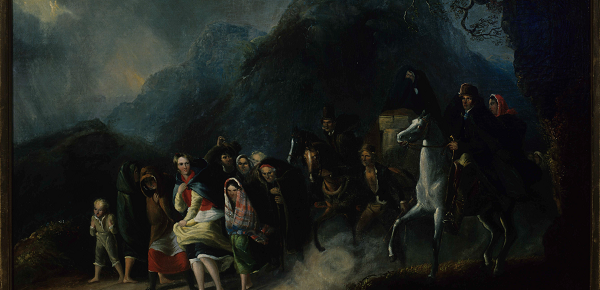
I’m one of the two general editors of a new series from Cambridge, Irish Literature in Transition, a series of six books that tracks the history of writing in, of and about Ireland from 1700 to the present. My colleague and co-General editor Marjorie Howes will probably disagree, but, for me, the period between 1780 and 1830 has a special place the story we tell. Most accounts of our literary history give particular prominence of the period that her book covers, from 1880 to 1840: decades that saw unprecedented literary achievements accompanied by major political upheavals. The story of Romantic Ireland, on the other hand, is often told in terms of failure: broken harps and exhausted cultural possibilities. But a close focus on these decades allows us to tell a different story, one that yields up intense activity, turbulent creative energies and the emergence of a critical language that is still in use.
Between 1780 and 1830, our modern idea of Irish literature took shape. Theories of national difference took on a distinctive quality in the aftermath of the American war of Independence while a new understanding of imaginative writing as a distinctive form of impression was also shaped across these decades. In Keywords, Raymond Williams sums up the developments between 1780 and 1830 as follows: ‘The sense of “a nation” having “a literature” is a crucial social and cultural, probably also political, development’.
What Williams doesn’t talk about though (at least in Keywords) is differences between and among the nations that made up the United Kingdom. From 1780 and 1830, Ireland underwent nothing less than a cultural revolution: extraordinary demographic expansion and a brief economic boom followed by depression and famine. Growing literacy was shadowed by the shift from Irish to English even as official state investigations resulted in the amassing of extraordinary amounts of data about daily life in Ireland. A vibrant popular classicism made its own transition from the hedge schools to the printed page as a cultural force whose reverberations continue to be felt right up Brian Friel’s dramatic return to the 1830s in Translations. Stark as Irish differences were, a growing body of literature was formed by archipelagic, Atlantic and imperial contexts as books and ideas began to move within the circuits of empire.
The fifty years discussed in this book were marked by revolution, reaction, and reform; political developments that were in turn shaped by and reflected within a turbulent and intense literary culture. So, what did the term ‘Irish literature’ mean in 1780 and how had understandings of that term changed by the 1830s? With a hesitant description of the field of ‘Hibernian belles-lettres’ at the outset of the period and strident calls for ‘Celtic’ and ‘native’ literature at its end, the Romantic era in Ireland saw the emergence of modern Irish literature as a distinct if contested cultural category. During these years, Irish literature came to consist of a recognizable body of work, which later generations could draw on, quote, anthologize and debate. In line with the series as a whole, the book offers readers a chance to think more about transitions between and across the centuries of Irish writing, to plot new co-ordinates and reimagine origins, reputations and futures.
Latest Comments
Have your say!